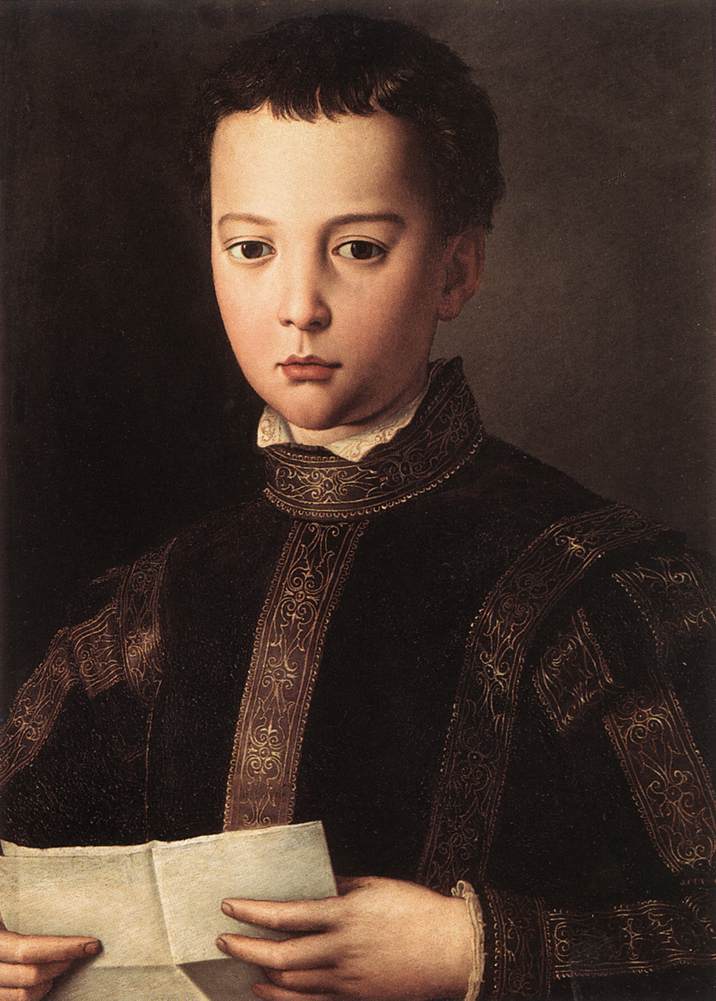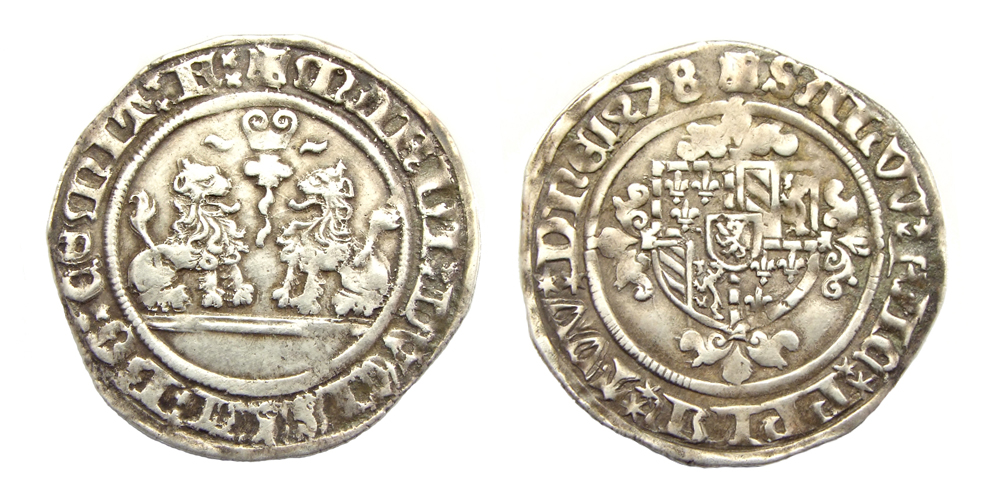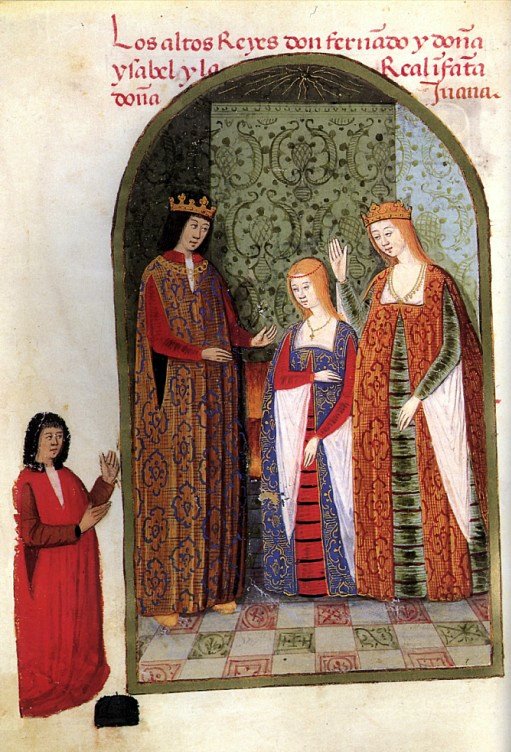|
Joanna Of Austria, Grand Duchess Of Tuscany
Joanna of Austria (German ''Johanna von Österreich'', Italian ''Giovanna d'Austria'') (24 January 1547 – 11 April 1578) was an Archduchess of Austria. By marriage to Francesco I de' Medici, she was the Grand Princess of Tuscany and later the Grand Duchess of Tuscany. One of her daughters was Marie de' Medici, second wife of King Henry IV of France. Family Joanna was born in Prague, the youngest of 15 children, the youngest daughter of Ferdinand I, Holy Roman Emperor and Anna of Bohemia and Hungary. She never knew her mother and eldest sister as her mother died two days after Joanna's birth and her sister Elisabeth of Austria, Queen of Poland, died two years before Joanna was born. Her paternal grandparents were Philip I of Castile and Joanna of Castile. Her maternal grandparents were King Vladislaus II of Bohemia and Hungary, and Anna of Foix-Candale. Through her father, Joanna was also a descendant of Isabella I of Castile and Mary of Burgundy. Marriage Her marriage to ... [...More Info...] [...Related Items...] OR: [Wikipedia] [Google] [Baidu] |
List Of Tuscan Consorts
The Grand Duchy of Tuscany was founded in 1569. It succeeded the Duchy of Florence. The grand duchy was initially ruled by the House of Medici, until their extinction in 1737. The grand duchy passed to the House of Lorraine, and then, to its cadet branch, the House of Habsburg-Lorraine. The House of Habsburg Lorraine ruled Tuscany from 1765 to 1801, and then 1814 to 1859. A reigning grand duchess was styled: *(1569–1691) ''Her Highness'' The Grand Duchess of Tuscany *(1691–1737) '' Her Royal Highness'' The Most Serene Grand Duchess of Tuscany *(1737–1765) '' Her Imperial Majesty'' Holy Roman Empress, the Queen of Hungary and Bohemia, the Archduchess of Austria, the Most Serene Grand Duchess of Tuscany, etc.Maria Theresa of Austria was ''suo jure'' Queen of Hungary, Queen of Bohemia, Archduchess of Austria, and, as the consort of Francis I, Holy Roman Emperor, she was Holy Roman Empress *(1765–1804) ''Her Royal Highness'' The Most Serene Grand Duchess of Tuscany, Archduchess ... [...More Info...] [...Related Items...] OR: [Wikipedia] [Google] [Baidu] |
Francesco I De' Medici, Grand Duke Of Tuscany
Francesco I (25 March 1541 – 19 October 1587) was the second Grand Duke of Tuscany, ruling from 1574 until his death in 1587. He was a member of the House of Medici. Biography Born in Florence, Francesco was the son of Cosimo I de' Medici, Grand Duke of Tuscany, and Eleanor of Toledo. He served as regent for his father Cosimo after he retired from his governing duties in 1564. Marriage to Joanna of Austria On 18 December 1565, Francesco married Joanna of Austria, youngest daughter of Holy Roman Emperor Ferdinand I and his wife Anne of Bohemia and Hungary. By all reports, it was not a happy marriage. Joanna was homesick for her native Austria, and Francesco was neither charming nor faithful. In 1578, Joanna died at the age of thirty-one, after falling down a flight of stairs while pregnant with their eighth child. Bianca Cappello Soon after Grand Duchess Joanna had died, Francesco went on to marry his Venetian mistress, Bianca Cappello, after aptly disposing of her ... [...More Info...] [...Related Items...] OR: [Wikipedia] [Google] [Baidu] |
Vincenzo Borghini
Vincenzo Borghini (29 October 1515 – 15 August 1580) was an Italian monk, artist, philologist, and art collector of Florence, Italy. Borghini was a learned Benedictine cleric. He was the luogotenente of the Accademia del Disegno (from 1563). After 1552, Borghini, a Benedictine monk served as Spedalingo or Prior of the Ospedale degli Innocenti in Florence. article by Rick Scorza, Journal of the Warburg and Courtauld Institutes 2003 The Warburg Institute LXVI 2003. He was an artistic advisor to the , and was engaged with |
Giorgio Vasari
Giorgio Vasari (, also , ; 30 July 1511 – 27 June 1574) was an Italian Renaissance Master, who worked as a painter, architect, engineer, writer, and historian, who is best known for his work ''The Lives of the Most Excellent Painters, Sculptors, and Architects'', considered the ideological foundation of all art-historical writing, and the basis for biographies of several Renaissance artists, including Leonardo da Vinci and Michelangelo. Vasari designed the ''Tomb of Michelangelo'' in the Basilica of Santa Croce, Florence that was completed in 1578. Based on Vasari's text in print about Giotto's new manner of painting as a ''rinascita'' (rebirth), author Jules Michelet in his ''Histoire de France'' (1835) suggested adoption of Vasari's concept, using the term ''Renaissance'' (rebirth, in French) to distinguish the cultural change. The term was adopted thereafter in historiography and still is in use today. Life Vasari was born prematurely on 30 July 1511 in Arezzo, Tuscany. ... [...More Info...] [...Related Items...] OR: [Wikipedia] [Google] [Baidu] |
Porta Al Prato
Porta can refer to: People * Porta (rapper) (born 1988), stagename of Christian Jiménez Bundo, a Spanish rap singer * Bernardo Porta (1758–1829), Italian composer active in France * Bianca Della Porta (born 1991), Canadian ice hockey and rugby player * Carlo Porta (1775–1821), Italian poet in the Milanese dialect * Costanzo Porta (1528–1601), Italian composer of the Renaissance * Giacomo della Porta (1532–1602), Italian sculptor and architect * Giambattista della Porta (1535–1615), Neapolitan physician and playwright * Giovanni Porta (1675–1755), Italian composer * Hugo Porta (born 1951), Argentine rugby union footballer * Livio Dante Porta (1923–2003), Argentine engineer * Luigi Porta (1800–1875), Italian surgeon * Miquel Porta (born 1957), Spanish epidemiologist and scholar * Richard Porta (born 1983), Uruguayan Australian footballer Places * La Porta, a commune in the Haute-Corse department of France on the island of Corsica * Porta (Barcelona) a neighbourhoo ... [...More Info...] [...Related Items...] OR: [Wikipedia] [Google] [Baidu] |
Mary Of Burgundy
Mary (french: Marie; nl, Maria; 13 February 1457 – 27 March 1482), nicknamed the Rich, was a member of the House of Valois-Burgundy who ruled a collection of states that included the duchies of Limburg, Brabant, Luxembourg, the counties of Namur, Holland, Hainaut and other territories, from 1477 until her death in 1482. As the only child of Charles the Bold, Duke of Burgundy, and his wife Isabella of Bourbon, she inherited the Burgundian lands at the age of 19 upon the death of her father in the Battle of Nancy on 5 January 1477. In order to counter the appetite of the French king Louis XI for her lands, she married Maximilian of Austria. The marriage kept large parts of the Burgundian lands from disintegration, but also changed of the dynasty from the Valois to the Habsburg (the Duchy of Burgundy itself soon became a French possession). This was a turning point in European politics, leading to a French–Habsburg rivalry that would endure for centuries. Early years Mary ... [...More Info...] [...Related Items...] OR: [Wikipedia] [Google] [Baidu] |
Isabella I Of Castile
Isabella I ( es, Isabel I; 22 April 1451 – 26 November 1504), also called Isabella the Catholic (Spanish: ''la Católica''), was Queen of Castile from 1474 until her death in 1504, as well as List of Aragonese royal consorts, Queen consort of Aragon from 1479 until 1504 by virtue of her marriage to King Ferdinand II of Aragon. Reigning together over a Dynastic union, dynastically unified Spain, Isabella and Ferdinand are known as the Catholic Monarchs of Spain, Catholic Monarchs. After a struggle to claim the throne, Isabella reorganized the governmental system, brought the crime rate to the lowest it had been in years, and unburdened the kingdom of the enormous debt her half-brother Henry IV of Castile, King Henry IV had left behind. Isabella's marriage to Ferdinand in 1469 created the basis of the ''de facto'' unification of Spain. Her reforms and those she made with her husband had an influence that extended well beyond the borders of their united kingdoms. Isabella I of ... [...More Info...] [...Related Items...] OR: [Wikipedia] [Google] [Baidu] |
Anna Of Foix-Candale
Anna may refer to: People Surname and given name * Anna (name) Mononym * Anna the Prophetess, in the Gospel of Luke * Anna (wife of Artabasdos) (fl. 715–773) * Anna (daughter of Boris I) (9th–10th century) * Anna (Anisia) (fl. 1218 to 1221) * Anna of Poland, Countess of Celje (1366–1425) * Anna of Cilli (1386–1416) * Anna, Grand Duchess of Lithuania (died 1418) * Anne of Austria, Landgravine of Thuringia (1432–1462) * Anna of Nassau-Dillenburg (died 1514) * Anna, Duchess of Prussia (1576–1625) * Anna of Russia (1693–1740) * Anna, Lady Miller (1741–1781) * Anna Russell, Duchess of Bedford (1783–1857) * Anna, Lady Barlow (1873–1965) * Anna (feral child) (1932–1942) * Anna (singer) (born 1987) Places Australia * Hundred of Anna, a cadastral district in South Australia Iran * Anna, Fars, a village in Fars Province * Anna, Kohgiluyeh and Boyer-Ahmad, a village in Kohgiluyeh and Boyer-Ahmad Province Russia * Anna, Voronezh Oblast, an urban locality in Voronez ... [...More Info...] [...Related Items...] OR: [Wikipedia] [Google] [Baidu] |
Vladislaus II Of Bohemia And Hungary
Vladislaus II, also known as Vladislav, Władysław or Wladislas ( hu, II. Ulászló; 1 March 1456 – 13 March 1516), was King of Bohemia from 1471 to 1516, and King of Hungary and Croatia from 1490 to 1516. As the eldest son of Casimir IV Jagiellon, he was expected to inherit Poland and Lithuania. George of Poděbrady, the Hussite ruler of Bohemia, offered to make Vladislaus his heir in 1468. George needed Casimir IV's support against the rebellious Catholic noblemen and their ally, Matthias Corvinus, King of Hungary. The Diet of Bohemia elected Vladislaus king after George's death, but he could only rule Bohemia proper, because Matthias (whom the Catholic nobles had elected king) occupied Moravia, Silesia and both Lusatias. Vladislaus tried to reconquer the four provinces with his father's assistance, but Matthias repelled them. Vladislaus and Matthias divided the Crown of Bohemia in the Peace of Olomouc in 1479. The estates of the realm had strengthened their position during ... [...More Info...] [...Related Items...] OR: [Wikipedia] [Google] [Baidu] |
Joanna Of Castile
Joanna (6 November 1479 – 12 April 1555), historically known as Joanna the Mad ( es, link=no, Juana la Loca), was the nominal Queen of Castile from 1504 and Queen of Aragon from 1516 to her death in 1555. She was married by arrangement to Philip the Handsome, Archduke of Austria, of the House of Habsburg, on 20 October 1496.Bethany Aram, ''Juana the Mad: Sovereignty and Dynasty in Renaissance Europe'' (Baltimore, Johns Hopkins UP, 2005), p. 37 Following the deaths of her brother, John, Prince of Asturias, in 1497, her elder sister Isabella in 1498, and her nephew Miguel in 1500, Joanna became the heir presumptive to the crowns of Castile and Aragon. When her mother, Queen Isabella I of Castile, died in 1504, Joanna became Queen of Castile. Her father, King Ferdinand II of Aragon, proclaimed himself Governor and Administrator of Castile.Bergenroth, G A, Introduction. Letters, Despatches, and State Papers to the Negotiations between England and Spain. Suppl. to vols 1 and 2. ... [...More Info...] [...Related Items...] OR: [Wikipedia] [Google] [Baidu] |
Philip I Of Castile
Philip the Handsome, es, Felipe, french: Philippe, nl, Filips (22 July 1478 – 25 September 1506), also called the Fair, was ruler of the Burgundian Netherlands and titular ruler, titular Duke of Burgundy from 1482 to 1506, as well as the first Habsburg King of Castile (as Philip I) for a brief time in 1506. The son of Maximilian I, Holy Roman Emperor and Mary of Burgundy, Philip was less than four years old when his mother died, and upon her death, he inherited the Burgundian Netherlands. Despite his young age, Philip quickly proved himself an effective ruler beloved by his people in the Low Countries, pursuing policies that favoured peace and economic development, while maintaining a steady course of government building. In 1496, Philip's father arranged for him to marry Joanna of Castile, Joanna, the second daughter of Queen Isabella I of Castile and King Ferdinand II of Aragon. Around the same time, Philip's sister, Margaret of Austria, Duchess of Savoy, Margaret, was giv ... [...More Info...] [...Related Items...] OR: [Wikipedia] [Google] [Baidu] |
Elisabeth Of Austria (1526–1545)
Elisabeth of Austria may refer to: People * Elisabeth of Austria (died 1107), daughter of Leopold II, Margrave of Austria * Elisabeth of Austria (1124–1143), daughter of Leopold III, Margrave of Austria; wife of Hermann II of Winzenburg * Elisabeth of Austria (d. 1353), daughter of Albert I of Germany, Duke of Austria; wife of Frederick IV, Duke of Lorraine * Elisabeth of Austria (1436–1505), daughter of Albert II of Germany; Queen consort of Casimir IV of Poland and Lithuania * Isabella of Austria (1501–1526), Queen of Denmark, Norway and Sweden; widely known also as Elizabeth * Elisabeth of Austria (1526–1545), daughter of Ferdinand I, Holy Roman Emperor; Queen consort of Sigismund II Augustus of Poland * Elisabeth of Austria (1554–1592), daughter of Maximilian II, Holy Roman Emperor; Queen consort of Charles IX of France * Archduchess Maria Elisabeth of Austria (governor) (1680-1741), governor of the Austrian Netherlands betwe ... [...More Info...] [...Related Items...] OR: [Wikipedia] [Google] [Baidu] |







